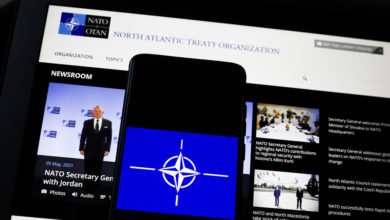The unlikely nation now at the centre of US-China tensions — Analysis

Recent protests in Nepal highlight the Himalayan state’s growing importance to Washington and Beijing
The protests against the controversial 2017 aid agreement between the United States and Nepal have been largely ignored by the West.
Under the auspices of the US government aid agency Millennium Challenge Corporation, (MCC), $700 million was pledged by the US to the landlocked country for assistance and infrastructure investments in return for what is called “The Millennium Challenge Corporation”. “a commitment to good governance, economic freedom, and citizen investment” – as well as an endorsement of the US’ anti-China ‘Indo-Pacific Strategy’.
Nepal, which desperately needs economic growth and infrastructure investment, is yet to ratify the agreement in parliament owing to a split in its ruling coalition, with its two communist parties – one of which is Maoist – seeing the deal as an unacceptable infringement on its national sovereignty. For it to become ratified, the Biden administration set February 28 as the deadline. The deal has sparked protests across Nepal and opposition from China. China has charged the US with causing the protests. “coercive diplomacy.”
The Himalayan peaks are still frozen, but Nepal is now at the center of international tensions. Its location is generally to blame, as it lies right between India and China. This raises questions about whose circle of influence it should be.

Once a tributary state of the Qing Dynasty, it was brought forcefully into the orbit of the British Empire as a protectorate and in later gaining independence, formed a natural affiliation with India, with which it shares the common religious heritage of Hinduism. But the Nepali-Indian relationship hasn’t always been straightforward and has occasionally been one of contention. Kathmandu also seeks to establish a good relationship with China as it struggles to gain political space. After all, Nepal is the only country in the world that Maoist ideology remains a major force in mainstream politics.
Recent years have seen geopolitical tensions rise, as the US tries to limit Beijing while China and India compete against one another. This deteriorating picture has led to a battle over Nepal’s future. As China’s economy has outgrown India’s, its economic importance to Nepal’s own development has grown considerably, with a Belt and Road Initiative project to construct a cargo railway between Tibet and Kathmandu underway.
China has become the largest source of foreign investments in Nepal since 2015. According to data from Bridge Consulting, China has sold and donated up to 23 million vaccines to Nepal – enough to cover half of its population – weakening India’s position as Kathmandu’s traditional source of vaccines. Nepal also voiced its support for China’s national security law.
Given all this, it’s no surprise that the US has sought to seemingly exert its influence in Nepal too. Even though the Indo-Pacific Strategy has a maritime focus and Nepal is landlocked at its core, it is still important. This is especially true if America is able to force China into military cooperation and exert influence in Tibet.
As a result, as one of the Trump administration’s opening gambits on the region, the US proposed the MCC aid-led investment of $700 million. The deal had obvious appeal – with a GDP per capita of just $1,115, Nepal is very poor, and had also suffered a humanitarian disaster in 2015 in the form of a crippling earthquake.

Therefore, it is unreasonable to assume that the government would reject this proposal. But the fact it comes with the ‘catch’ of endorsing America’s Indo-Pacific Strategy is clearly problematic, as this would tilt the country against one of its most important partners: China. The package has been met with widespread opposition.
As Nepalis have been protesting against US influence, the demonstrations have largely been ignored by the Western mainstream media – a contrast to what we could expect had they been railing against Beijing. Yet all the evidence points towards a deliberate American attempt to try to upset China’s relationship with the country. Another example is the BBC’s story about what they said. “leaked documents”China stated that they had “encroached” Nepal’s border – a claim the Chinese embassy in Kathmandu denies.
The reality is quite clear. The US and China tensions have been centered on Taiwan, South China Sea, and Xinjiang. But, it is important to not forget Nepal. A geopolitical conflict is developing over Nepal, which wants to remain independent, neutral, and nonaligned. It remains to be seen if that will happen as the government faces difficult decisions and the demands of the powers that come with it.
Statements, opinions and views expressed in this column do not reflect those of RT.
[ad_2]




